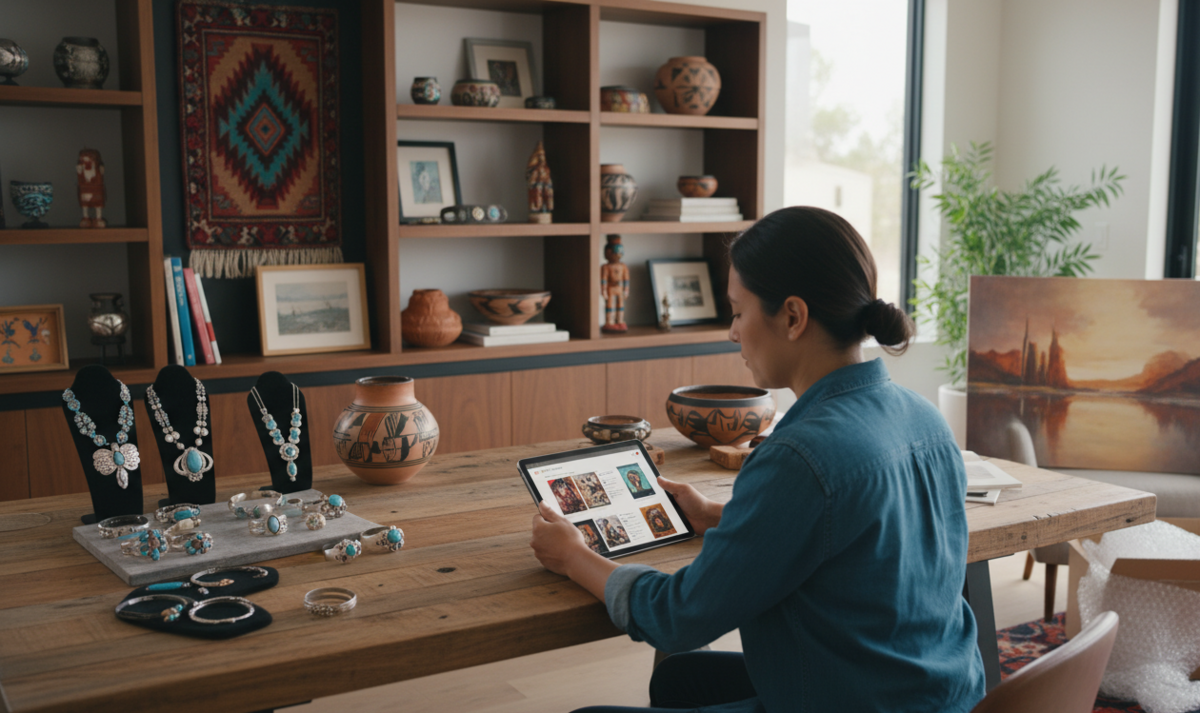Building a Native American art collection online can be a deeply rewarding journey, blending cultural appreciation with thoughtful investment. Whether one is a first‑time buyer or aspiring long‑term collector, the path involves more than just purchasing beautiful pieces — it demands respect, education, and a strategic approach.
Understanding the Landscape: Research & Provenance
One of the first steps for a beginner collector is to educate themselves about Native American art traditions. Native American art encompasses diverse regions, techniques, and media, from Southwestern pottery and Navajo weavings to Northwest Coast carvings and masks. A solid foundation in the cultural, historical, and geographical contexts helps collectors evaluate pieces with respect and insight.
Equally important is provenance. Not all items labeled “Native American” are genuinely created by Indigenous artists. As some collectors warn: avoid items marked merely “inspired by Native style” without clear lineage. > “Dont buy native ‘inspired’ … This is tantamount to admission they are not Native.” Genuine works often come with documentation, tribal attribution, artist biographies, or certificates of authenticity. On the flip side, when provenance is unclear or absent, walking away may be the most ethical choice.
Ethical and Financial Strategies for Online Buying
With the rise of online marketplaces, auctions, and gallery platforms, acquiring Native American art has never been more accessible — but that accessibility comes with caveats. First-time buyers should set a clear budget and resist impulse purchases, even if a piece seems tempting. Starting small — perhaps with a modest pottery bowl or a limited-edition print — allows collectors to grow steadily.
Joining the online art world responsibly also means prioritising ethical sourcing. Building relationships with living Indigenous artists not only supports their work but also ensures a more meaningful connection to the culture. As one collector put it, “Buy living!” rather than just historical artifacts. It’s also wise to verify that sellers provide detailed origin information, artist background, and transparency about cultural heritage.
Long-Term Collection Mindset & Growth
To transition from casual buyer to committed collector, one must think long term. This means:
- Developing a personal collecting focus. Decide whether to emphasize traditional media (like beadwork, pottery, or woven textiles) or contemporary interpretations by modern Native artists.
- Tracking market trends and condition. For older objects — such as ceramics, textile pieces, or carvings — examine condition carefully. Look for signs of repair, fading, or damage.
- Documenting provenance and care. Keep records of purchases, condition reports, and any historical research. This documentation not only safeguards the piece’s history but also helps with insurance and future validation.
- Building relationships. Connect with galleries, Indigenous art fairs, and online platforms specializing in Native American art to gain access to trusted sources and deepen cultural understanding.
Ultimately, building a Native American art collection online is a journey of respect, curiosity, and commitment. A thoughtful approach ensures that each acquisition is not only valuable but meaningful. For beginners seeking inspiration and ethical guidance, delving into the article “Collecting Authentic Native American Art: Tips and Inspiration for Beginners” can offer a deeper perspective on how to begin collecting with integrity and purpose.
